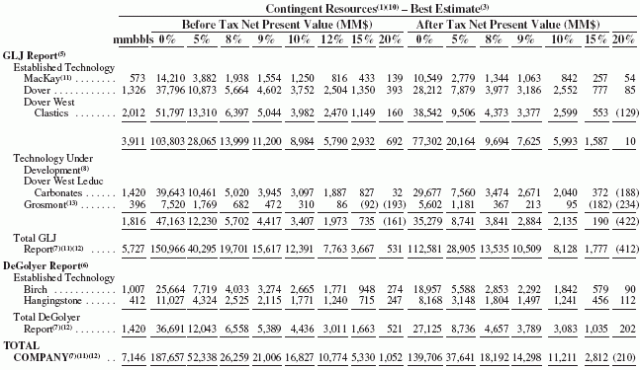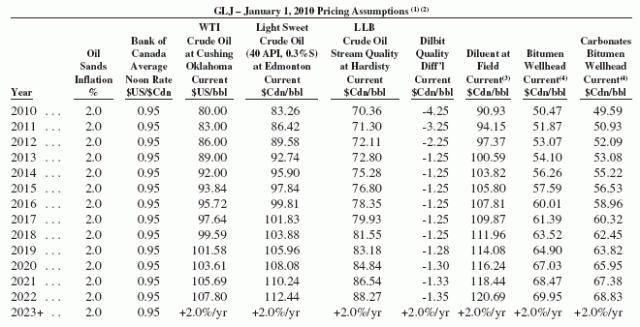I am reading plenty of news how Athabasca Oil Sands is planning a very large public offering. According to their final prospectus, they will raise $1.35 billion @ $18/share of gross proceeds and about $1.26 billion net.
Since this got on the media’s radar, it should be a foregone conclusion that the option to purchase more of the offering will be exercised, so the final offering should be around $1.55 billion gross, and $1.45 billion net. The following analysis assumes the latter will be the case.
Note this is just a summary analysis. It only scratches the surface, but it covers what I figure are the salient details.
After the offering, they will have about 400 million shares outstanding, and assuming an $18 purchase price, this is a market capitalization of about $7.2 billion.
What exactly would an IPO subscriber be purchasing? This is why looking at the prospectus (all 288 pages in its full glory) is a valuable exercise. The company is a development stage company that has interests in a few tar sands near the Fort McMurray area of Alberta. They are currently not performing, but they are expected to come online in a few years, per the following schedule (page 8):

It would be reasonable for an investor to think this company will be producing net losses until around 2014-2015 when their oil sands projects come online.
After the offering, the company will have about $2 billion in the bank and about $400 million in long term debt. Thus, it will mostly be capitalized with equity and should have sufficient room to finish most of what they need to by 2014 – they will have to raise a little more money between now and then.
Page 78-84 of the prospectus contains some significant assumptions and analysis of the company’s estimated reserves. The first chart is based on a discounted net present value given the best estimates:

What this says is that if you have a 10% cost of capital and bought this company’s resources at the various sites for $11.2 billion, it would be a neutral decision. Of course, assumptions such as whether the company will be able to realize the “best estimate” or something better or worse is something for an investor to determine. Also, the following assumptions on future oil prices are made:

Roughly, it is assumed that (the media-quoted oil price source – there are different prices for different classes of oil) oil in 2010 will be US$80 in 2010; that the CDN/USD exchange will be 0.95, and that oil will increase $3/barrel until 2014, and then up 2% from there.
If projected oil prices are lower than this, you “lose” as an investor. If projected oil prices are higher, you “win”.
My quick take is that there are other companies out there using steam-assisted gravity drainage technologies to extract oil from tarsands. It takes a little (and I literally mean this; a little) research to figure out who those players are (beyond Suncor) and looking at their economic profiles. I can safely say that if I were offered shares of Athabasca Oil Sands at the IPO price, I would pass from a valuation perspective. From a market perspective, however, it would be worth considering strictly to sell it off at a post-IPO price. It kind of reminds me of the internet stocks in the late 90’s.
Once this company does go public it would not surprise me that they would get a valuation bump, and other similar companies that already are trading should receive bumps as a result. I have seen this already occur, probably in anticipation of the IPO.
If you had to invest into Athabasca Oil Sands and not anywhere else, I would find it extremely likely there will be a better opportunity to pick up shares post-IPO between now and 2014.


